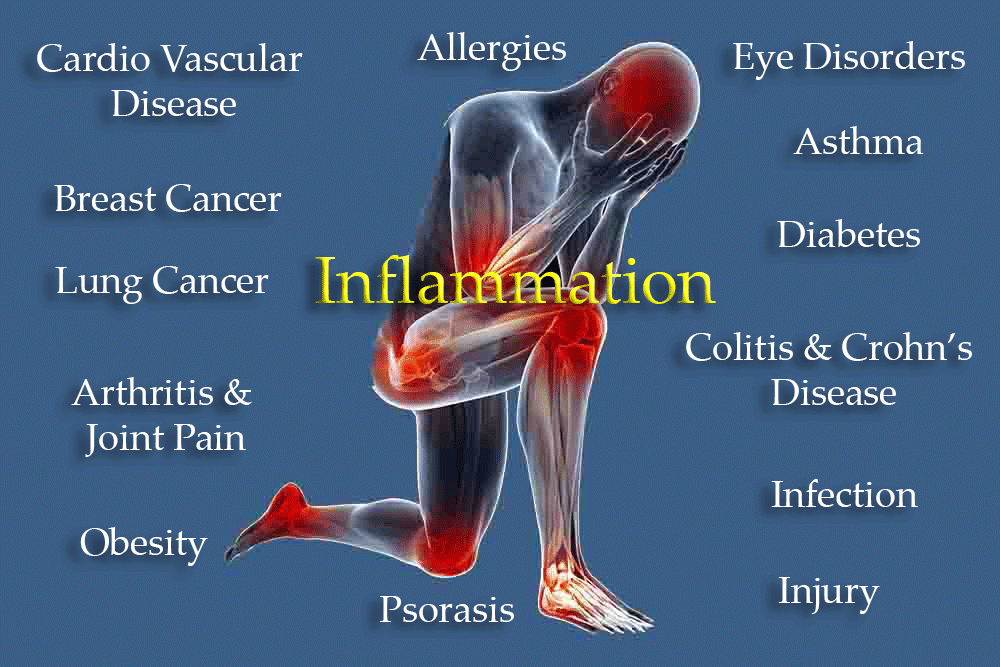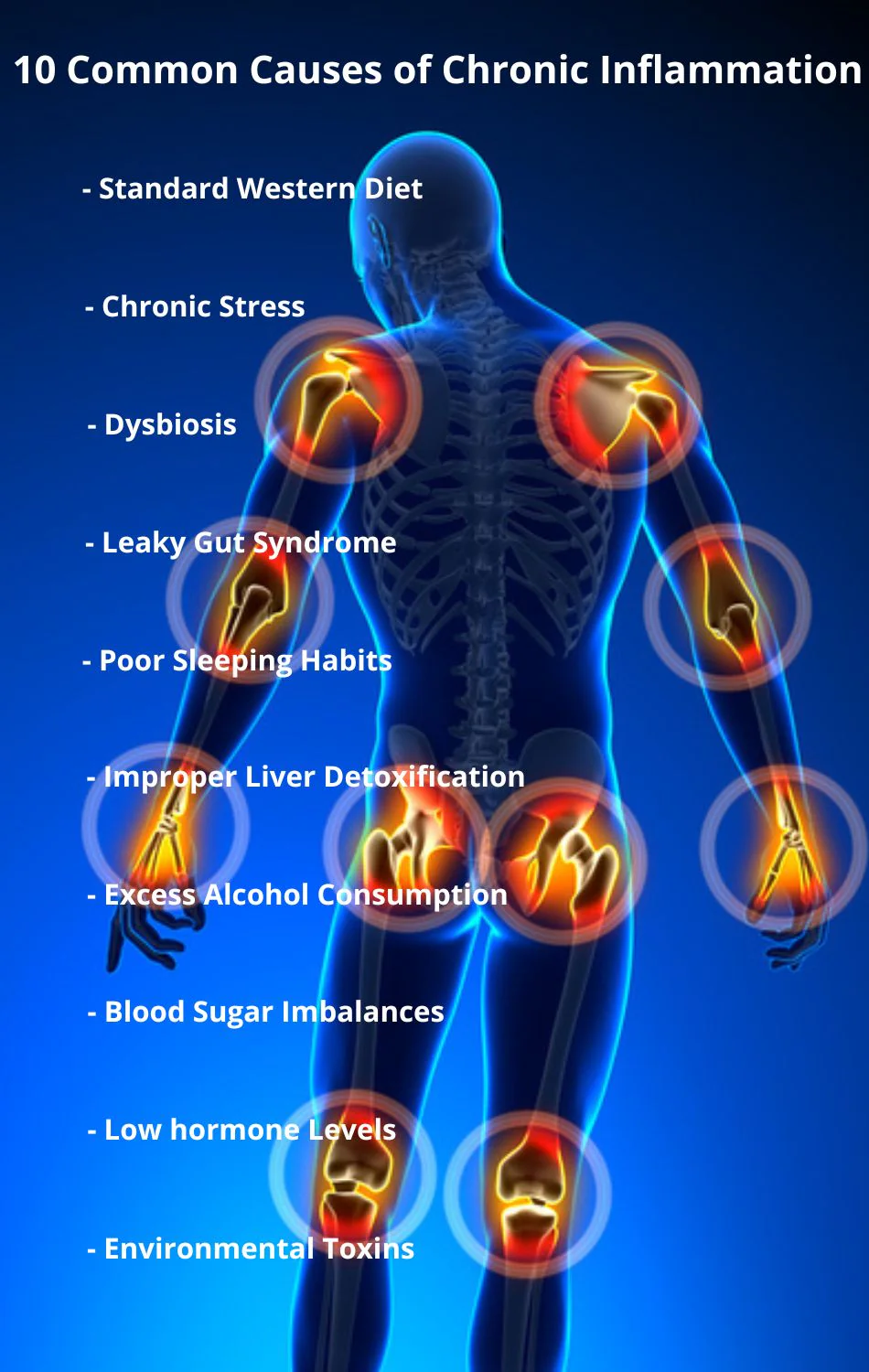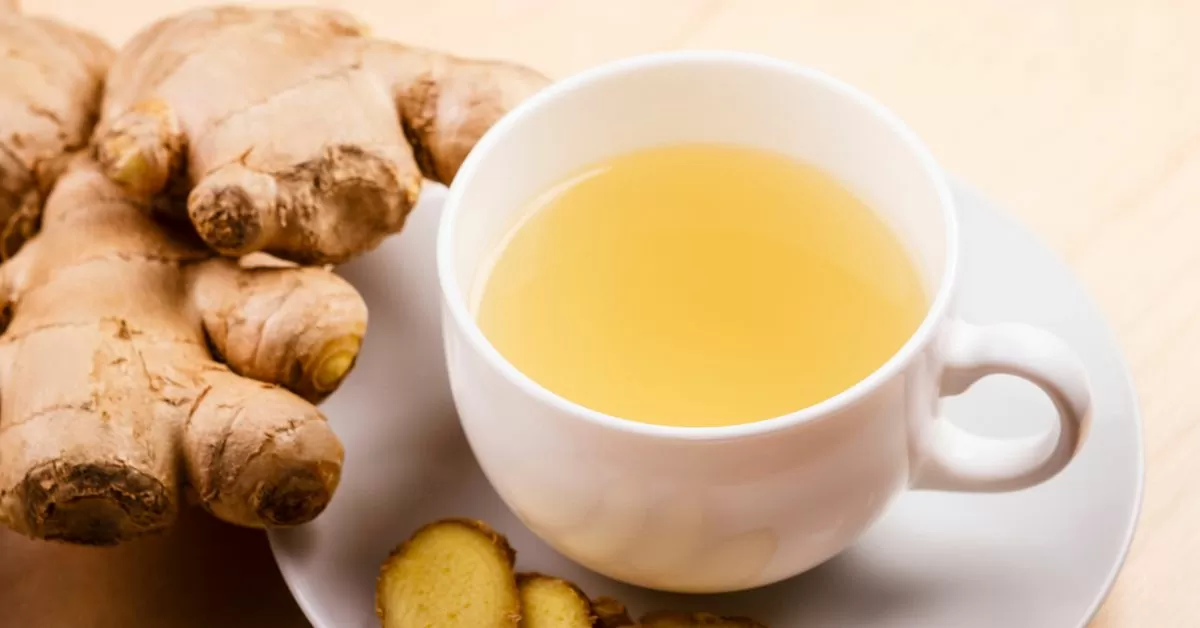
Chronic inflammation is a condition which is thought to contribute to the pathogenesis of several diseases such as cancer, autoimmune disorders, chronic obstructive pulmonary disease, cardiovascular disease, and type 2 diabetes.1 Said illnesses are relatively prevalent in North America, demanding interventions to help manage, and possibly mitigate, their underlying and destructive immune-driven processes. Pharmaceutical medications are often used to treat such conditions. However, side effects from non-steroidal anti-inflammatories (NSAIDS), such as gastric bleeding, have made them a less appealing option for some individuals.2 In the following sections, this author will explore inflammation in greater detail, as well as consideration of ginger as an adjunct to, or possible replacement for, NSAIDs.

Inflammation is a normal, and necessary, process in the management of host defense and is stimulated by external and internal triggers.3 External triggers could include exposure to microbes, viruses, or pollutants while internal triggers could include cell injury, impaired cellular metabolism, and cell death.3(1131) Ultimately, inflammation’s purpose is to remove and control harmful stimuli, reduce deeper injury, begin the cellular healing process, and restore damaged tissue.3(1131)Conversely, chronic inflammation is a process characterized by a near-constant presence of inflammatory events, which extends beyond their useful function (physiologically) causing tissue destruction.3(1131) As outlined in the introduction, inflammation is at minimum, implicated in the pathogenesis of many chronic disease states and plays a critical role in chronic autoimmune and inflammatory conditions.3(1131) The following sections will compare and contrast acute and chronic inflammatory processes in greater detail as well as natural options to manage the latter.

Under typical conditions, acute inflammation is initiated and a normal inflammatory process follows.3(1132)Such inflammation is initiated by resident macrophages and mast cells which secrete pro-inflammatory cytokines (cell signaling substances) to include leukotrienes, prostaglandins, histamines, interleukin β (IL- β), interleukin 6 (IL-6), and tumor necrosis factor α (TNF-α).3(1132) Such substances produce vasodilation and recruit monocytes, neutrophils, phagocytic cells, and leukocytes (all help destroy pathogens) followed by infiltrating fibroblasts to initiate cell and tissue remodeling; such processes usually occur over several hours up to 3 days.3(1132) Chronic inflammation, however, can last for weeks and possibly years and is thought to originate from defects in acute inflammation which perpetuates chronic inflammation.3(1132) Having briefly considered the nature and purpose of acute inflammation as well as the deleterious effects of chronic inflammation, the following will explore ginger as a means of down-regulating chronic inflammatory processes.

Ginger, also known as Zingiber officinale, is a rhizome (plant stem with protruding roots and shoots) which has been used for several millennia as a flavoring agent and food additive.1(5) Said plant finds it origins in South East Asia/Middle East and contains within it active biological compounds such as paradol, zingerone, shogaol, and gingerol widely used for its anti-atherosclerotic, anti-tumorigenic, antibiotic, and anti-oxidant properties.1(5) Interestingly, researchers have suggested that ginger induces health benefits by inhibiting inflammatory mediator (cytokines mentioned in the previous sections) production and release thereby controlling the intensity and propagation of chronic inflammation. Indeed, the research of Askari et al1(15) via meta-analysis/systematic review of 9 randomized controlled trials explored the utility of 1-3 grams of ginger/day over a duration of over 80 days; results indicated beneficial effects in lowering IL-6, TNF-α, C-reactive protein (a measure of inflammation), and improving total antioxidant capacity (ability to manage oxidation). As such, the following will explore ginger extraction and preparation in greater detail.

Ginger is relatively accessible, safe, and a cost-effective plant that could be used to support the control of inflammation and maintenance of overall health. Said plant compounds can be extracted through different methods such as hot water extraction, ultrasound-assisted extraction, alkaline solution extraction, and enzyme-assisted extraction.4 Chen et al4(647) determined that when comparing the 4 extraction methods, alkaline solution extraction (ASE) produced the highest extraction yield and elicited the greatest antioxidant capacity in addition to the highest hypoglycemic activity (another benefit of ginger). Delivery of ginger can be achieved through consumption of the extract, or through topical routes using a nanoemulgel of ginger extract. The latter choice could be appealing to individuals with gastrointestinal issues and who require a sustained and/or prolonged release of the constituents from ginger extract.5 Furthermore, topical/transdermal administration of ginger extract was found to be required in smaller doses when compared to oral routes with an advantage of increased accessibility to inflamed regions of the body.5(569)
In conclusion, chronic inflammation is a condition which is thought to contribute to the pathogenesis of several diseases such as cancer, autoimmune disorders, chronic obstructive pulmonary disease, cardiovascular disease, and type 2 diabetes. Although NSAIDs can be used to control said inflammation, such drugs can exhibit unfavorable side effects. However, mounting evidence has shown support for ginger extract as a means of modulating inflammatory cascades similar to NSAIDs, without side effects such as gastric bleeding, compromised kidney function, and coronary heart disease often associated with its pharmacological counterpart.2(3) Ultimately, such an approach, as part of a larger and more inclusive protocol, could help liberate individuals from discomfort and disease while supporting improved health and quality of life.
References
1. Askari G, Aghajani M, Salehi M, et al. The effects of ginger supplementation on biomarkers of inflammation and oxidative stress in adults: A systematic review and meta-analysis of randomized controlled trials. J Herb Med. 2018:1-26. doi:10.1016/j.hermed.2020.100364.2.
2. Ye J, Ghosh S. Omega-3 PUFA vs. NSAIDS for preventing cardiac inflammation. Front Cardiovasc Med. 2018;5(146):1-6. doi:10.3389/fcvm.2018.00146
3. Nasef N, Mehta S, Ferguson LR. Susceptibility to chronic inflammation: An update. Arch Toxicol. 2019;91:1131-1141. doi:10.1007/s00204-016-1914-5.
4. Chen X, Chen G, Wang Z, et al. A comparison of a polysaccharide extracted from ginger (Zingiber officinale) stems and leaves using different methods: preparation, structure characteristics, and biological activities. Int J Biol Macromol. 2020;151:635-649. doi: https://doi.org/10.1016/j.ijbiomac.2020.02.222 (Links to an external site.
5. Amit C, Kant ARK, Raj PG, et al. Formulation and evaluation of ginger extract loaded nanoemulgel for the treatment of rheumatoid arthritis. J Drug Deliv Ther. 2019;9(4):559-570. doi: https://doi.org/10.22270/jddt.v9i4.3143.
-Michael McIsaac
